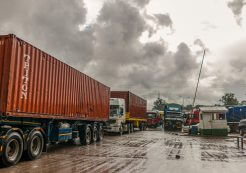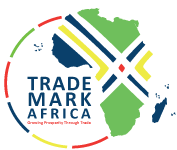| Catalytic investment | Description | TMA Portfolio |
| Industrial park | An area zoned and dedicated to industrial development, facilitating economies of scale in investments in power, water, waste management and other infrastructure. Industrial parks are generally located close to transport facilities, especially where more than one transport modes coincide, including highways, railways, airports and ports. Industrial parks can promote economies of agglomeration where tenant firms benefit from proximity to upstream input suppliers and down stream customers, share information on markets and technology, share facilities such as training programmes. |
|
| Agro Park | A cluster of businesses engaged in agro-processing and food manufacturing with access to a high potential agricultural production zone and consumer markets. Tenants could include processors of fruit juice, dried fruits, fish, meat, cashew and macademia nuts, coconut, milk and cheese and horticulture as well as manufacturers of sauces, flavourings, confectionery, soups, drinks.
Tenants also include the providers of essential ancillary services including transport and logistics services, laboratory services, standards and certification, packaging, cold storage. |
|
| Logistics Facility | A trade and logistics facility comprises a series of cold and hard storage infrastructure, grading and sorting centres and packing sheds, located together with ancillary services including transport services, testing and certification, with strong connectivity to a series of designated product supply chains. The purpose of the facility is to support amalgamation, maintenance of product quality, and to provide for grading and certification in line with the needs of domestic and international markets. The trade and logistics facility is embedded into the supply chain with upstream and downstream provision of logistics and cold chain facilities. |
|
| Shipyard | High potential locations disconnected from markets by lack of marine transport. |
|
| Cross border market | A facility for efficiently connecting buyers and sellers in a location with significant opportunities for trade. Cross Border Market facilities include weighbridges, sorting and packing sheds, cold and dry storage for aggregation and quality maintenance, and transport and logistics services. They may also include wholesale markets and dedicated space for the establishment of processing and manufacturing activities. |
|
- Our Impact
- Annual Reports
- Impact Stories
- Research Hub
- Strategic Evaluations
- TMA DFID Independent Evaluation Reports
- Kenya Country Programme
- Uganda Country Programme
- Rwanda Country Programme
- Rwanda Electronic Single Window
- Export Development Programme
- Elimination of Non-Tariff Barriers to Trade
- Standards Harmonisation and Conformity Testing Programme
- The East Africa Customs and Freight Forwarding Practising Certificate Programme (EACFFPC)
- Single Window Information for Trade (SWIFT)
- Monitoring, Evaluation and Learning
- Media
- Who We Are
- What we do
- where we work
- Work with us
- Knowledge Center
- Whistle Blowing




















